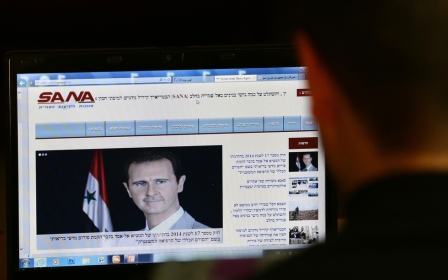US Sunni-Shia balancing act adds to Middle East tensions

On Saturday, 14 February, the Turkish forces began shelling the positions of the Syrian Kurdish militias in the Azaz region, in its surroundings and in Menagh airbase. The Turks justified the shelling, which continued intermittently over the past few days, in the name of implementing engagement rules, meaning that they come as a reaction to the threat the Kurdish militias pose to Turkish security.
Clearly, the Turks are concerned about the military developments in the north and northwest of Aleppo and about the role played by the Kurdish militias that are backed with Russian aerial support with the aim of bolstering the position of Assad’s regime and guaranteeing the advancement of its troops in the Syrian-Turkish borders zone.
This is what prompted the Turkish prime minister to warn the Kurdish militias against coming close to the border crossing point with Syria or using Menagh airbase to threaten Turkish security.
Thus far, things seem expected and normal. Ankara perceives the Kurdish militias affiliated with the the Syrian Kurdish Democratic Union Party to be terrorist groups that happen to be a branch of the Kurdish Workers Party (PKK), which has been fighting the Turkish state since the 1980s. What seemed odd and unexpected were the statements made by American officials in which they expressed concern toward the course of events in the north of Aleppo and demanded that Turkey should cease its shelling of the Kurdish forces' positions.
Clash with Turkey
There is a fierce disagreement between Ankara and Washington over the stance vis-à-vis the Kurdish Democratic Union Party (PYD) in Syria. While Ankara considers the party to be a terrorist organisation, Washington refused to adopt the same position. In fact, the PYD's militia, the YPG, has effectively become an ally of the United States of America in the war against ISIS in Syria.
American military and political officials have visited the areas controlled by the PYD within Syria and the United States provides the YPG militias with arms. Washington does not seem anxious in any way about the growing close alliance between the YPG militias and the Russian forces inside Syria. Nor does Washington appear to be concerned that the weapons it supplies to the YPG and its allies end up being used against the Syrian revolutionaries in the Aleppo countryside. Nor does it seem to pay much attention to the reports claiming that such weapons are being used against the Turkish army and Turkish security forces in the east and southeast of Turkey.
Yet, this does not seem to be all. The Turkish–American disagreement in Syria is not any less than the American–Saudi disagreement. In fact, Ankara’s dispute with Washington is proceeding along a parallel line with the Riyadh’s dispute with its American ally.
Since early February, Riyadh declared its readiness to participate in a ground operation in Syria and its determination to increase the level of its participation in the air strikes against ISIS positions. Concurring reports have spoken of a Saudi-Turkish coordinated effort aimed at playing a bigger role in the war on terrorism in Syria, both on the ground as well as in the air. However, such a role, from the viewpoints of Ankara and Riyadh, would require some kind of international cover and the best cover would be the US-led coalition in the war on terrorism.
In order to play a bigger military role in Syria, the Turks and the Saudis would have to obtain American approval, cooperation and support. While Washington publicly welcomes the Saudi-Turkish initiative, no actual US approval has been granted. Even after Saudi Arabia started preparations to send its planes to the Turkish airbase of Incirlik, there was no indication of any American consent. Paradoxically, Washington’s call for Turkey to cease its shelling of the positions of Kurdish militias came just hours after the start of the shelling.
So, what motivates the policy of the United States in Syria and its policy toward its two allies in Turkey and Saudi Arabia? How can one interpret Washington’s silent, or at least indifferent, position vis-à-vis the extensive Iranian and Russian intervention in Syria and Washington’s hesitation, or perhaps anxiety, toward a possible Turkish and Saudi intervention?
Retreat from Middle East
We are dealing with a case of relative US withdrawal from the Middle East. But such withdrawal did not begin with the Syrian crisis but rather with the arrival of President Obama at the White House seven years ago. Obama was prompted to pursue such a policy as a result of the adverse consequences to the status and image of the United States and the damaged incurred as a result of the years of war sponsored by the administration of George W Bush from Afghanistan and Iraq to Lebanon and Palestine. In addition, there were also the heavy cost of the failure of the American approach to the issues and crises of the Middle East and the significant ascendance of China in the Pacific rim.
Over all, this is not the first time in which Washington’s interest in a certain part of the world retreats, despite the sliding of this region into a continuous series of crises, in favour of attending to another region elsewhere in the world. Nor is it the first time in which Washington pursues the policy of directing crises and maintaining some sort of a ceiling for the roles of actors in these crises without itself being a direct player in what goes on.
Relative retreat does not mean a complete withdrawal. Nor does it mean relinquishing the role of maintaining a balance of power without direct intervention. It should perhaps be noted here that Washington never became a fighting party in the Second World War until the Japanese bombed Pearl Harbour. Yet, it did endeavour throughout the early years of the war to deny Nazi Germany a conclusive victory against the allies. What this means is that a relative retreat from a certain region in the world does not mean a lack of an American strategic vision of what that region should look like.
There are initial signs, which perhaps need some time to become clearer, that the United States wishes to maintain a Shia-Sunni balance in the Middle East. Perhaps it can be said that such a strategic American vision was conceived gradually during the past two decades and that is is not peculiar to the Obama administration and is not related to the level of American-Iranian relations.
Washington handed Iraq over to the Shia forces allied with Iran not because the planners of Iraq’s invasion were unaware of the level to which Iraqi Shia political groups were under Iranian influence. Nor did they do so because the administration of the US occupation of Iraq was inattentive to the Iranian infiltration of the various departments of the new Iraqi government. George W Bush’s Washington was, in fact, desirous that the new Iraq should become a Shia Iraq. The purpose was, on the one hand, to reinforce Sunni-Shia balance in the region while, on the other hand, endeavouring to use the aspired “democratic” Iraq as a tool in the process of changing the nature of the Iranian regime.
However, while the Obama administration maintained the essence of the strategy of maintaining a political sectarian balance in the Middle East, the second objective became less important, especially after hopes were raised that an agreement could be reached over the Iranian nuclear programme. Inasmuch as the United States exerts a tangible effort in order to maintain the sectarian regime in Iraq, it does not find the Iranian intervention in Syria disturbing.
Playing both sides
In a period when an ever expanding space is made available for regional powers to play a role, Washington believes that a Turkish-led or a Turkish-Saudi-led decisive Sunni ascendancy would weaken the American influence in the region. However, there is a limit to what Iran can achieve, such as non-expansion in the Gulf and the Arabian Peninsula. There are other limits to what Sunni forces can perform, such as winning the battle in Syria and Iraq and seizing control of the resources of the Orient.
This, of course, is a sectarian policy. However, it was not Washington who initiated the sectarian conflict. Washington found such conflict right in front of it and it is seeking to exploit it for the sake of prolonging and extending its own influence in the region. Similarly, it did not create the Islamic–Hindu conflict in the Indian subcontinent. Washington’s silence vis-à-vis the Russian intervention and its collaboration with the Kurdish militias are mere details within a bigger strategic framework: the maintenance of a Sunni–Shia balance within the region.
What really matters, though, is that such a policy of balance will not create peace or stability but ensure constant tension. Balance between a majority and a minority means in essence violating the rights of the majority and undermining its interests.
- Basheer Nafi is a senior research fellow at Al Jazeera Centre for Studies.
The views expressed in this article belong to the author and do not necessarily reflect the editorial policy of Middle East Eye.
Photo: US President Barack Obama (L) and former US President George W. Bush reach out to shake hands during a dedication ceremony at the George W. Bush Library and Museum on the grounds of Southern Methodist University on 25 April, 2013 in Dallas, Texas (AFP).
Stay informed with MEE's newsletters
Sign up to get the latest alerts, insights and analysis, starting with Turkey Unpacked
Middle East Eye delivers independent and unrivalled coverage and analysis of the Middle East, North Africa and beyond. To learn more about republishing this content and the associated fees, please fill out this form. More about MEE can be found here.





